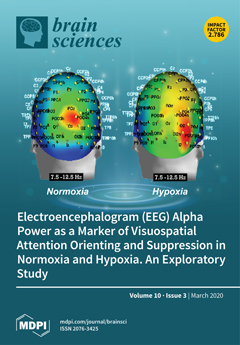Background: The aim of this prospective, a three-year follow-up study, was to establish the role of high on-treatment platelet reactivity (HTPR) in predicting the recurrence of vascular events in patients after cerebrovascular incidents, particularly in the aspect of stroke etiology.
Methods:
[...] Read more.
Background: The aim of this prospective, a three-year follow-up study, was to establish the role of high on-treatment platelet reactivity (HTPR) in predicting the recurrence of vascular events in patients after cerebrovascular incidents, particularly in the aspect of stroke etiology.
Methods: The study included 101 subjects with non-embolic cerebral ischemia (69 patients with ischemic stroke and 32 patients with transient ischemic attack) treated with 150 mg of acetylsalicylic acid (aspirin) a day. The platelet reactivity was tested in the first 24 h after the onset of cerebral ischemia by impedance aggregometry. Recurrent vascular events, including recurrent ischemic stroke, transient ischemic attack, myocardial infarction, systemic embolism, or sudden death of vascular reason, were assessed 36 months after the onset of cerebral ischemia.
Results: Recurrent vascular events occurred between 3 and 9 months after onset in 8.5% of all subjects; in the HTPR subgroup, recurrent vascular events occurred in 17.9%; in the normal on-treatment platelet reactivity (NTPR) subgroup, they occurred in 4.6%. We did not notice early or long-term recurrent events. Aspirin resistant subjects had a significantly higher risk of recurrent vascular events than did aspirin sensitive subjects (Odds ratio (OR) = 4.57, 95% Confidence interval (CI) 1.00–20.64;
p = 0.0486). Cox proportional hazard models showed that large-vessel disease (Hazard ratio (HR) 12.04, 95% CI 2.43–59.72;
p = 0.0023) and high on-treatment platelet reactivity (HR 4.28, 95% CI 1.02–17.93;
p = 0.0465) were independent predictors of recurrent vascular events. Conclusion: Aspirin resistance in the acute phase of cerebral ischemia was associated with a higher risk of recurrent medium-term vascular events, coexisting with large-vessel etiology of stroke. Platelet function-guided personalized antiplatelet treatment should be considered for patients with recurrent strokes, especially when due to large-vessel disease.
Full article






